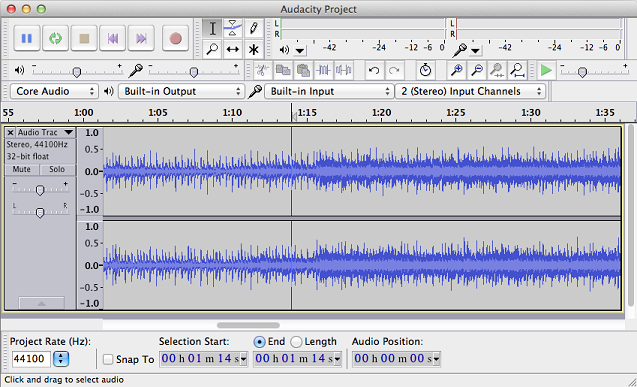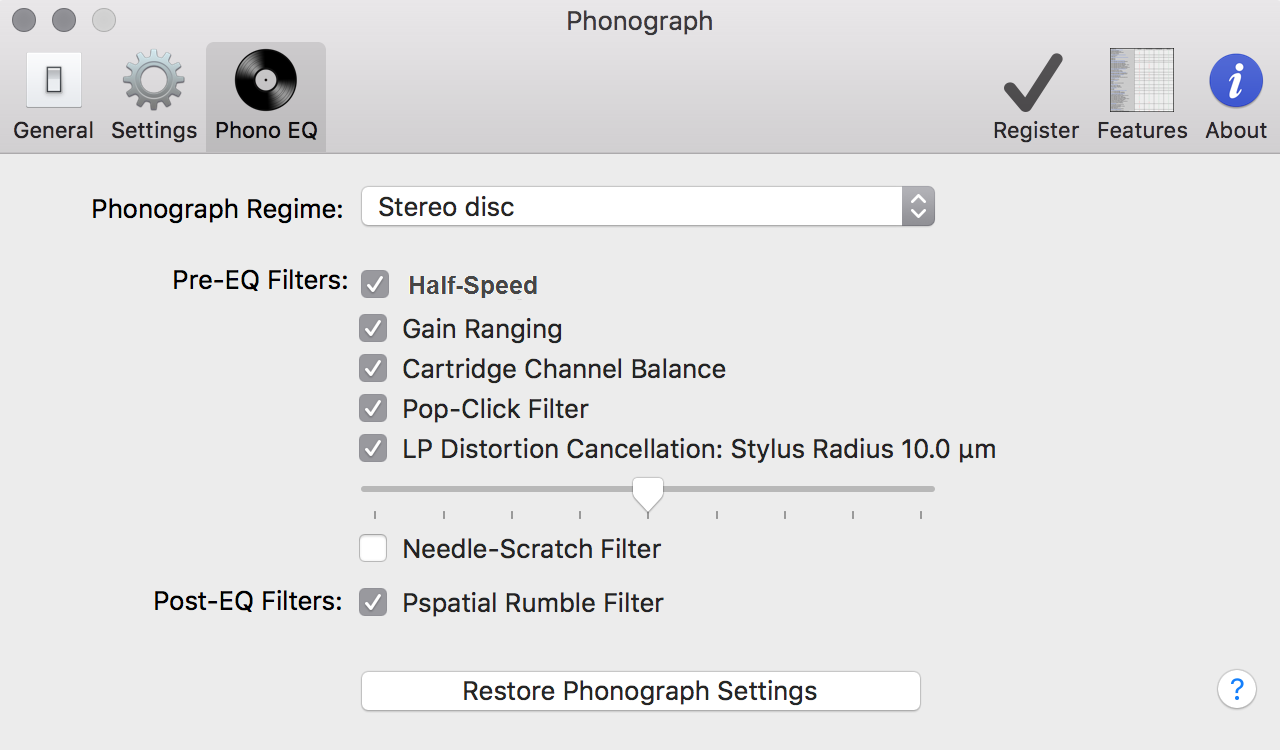
Audacity running under the Mac OS X operating system

Audacity features, not only the recording tools you need, but other tools which you can use to enhance your needle-drops like click and noise filtering and speed change. You can read about and download Audacity here.

Stereo Lab applies equalisation to compensate for the recording characteristic of the audio stored on analogue gramophone records. To do this, the recording of the signal from the pickup must be unequalised when it is recorded onto the computer.
The signal from a gramophone pickup is too small to apply to the line input of most sound-cards or audio interfaces. Moving coil pickups can feed a microphone input, although a lot of gain will be required and this risks the introduction of noise. More common moving magnet cartridges may not feed microphone input directly because the signal is adversely affected by the low input impedance of most microphone inputs.
What is really required is a dedicated phono preamplifier to bring the small signal from the cartridge up to a healthy level for input to the computer sound-card. Many phono preamplifiers exist at all price levels from a host of manufacturers . The vast majority of the phono preamplifiers apply RIAA equalisation in the hardware of the unit and that is not what is required here. We need a preamplifier which provides gain and impedance conversion, without applying the equalisation. These are unfortunately quite rare. There are some very low-cost options which only work with moving magnet cartridges. And there are some other, high-end, units too; usually with "flat" as an equalisation option in addition to RIAA and others. For other options, go here.
When recording the unequalised signal from a gramophone record, set levels in the normal way so that peaks are always several dB below clipping. There is no need to anticipate the effect of the RIAA filtering in Stereo Lab because the software will automatically adjust the level of the input file to give you best resolution in the processed file.
Recording sampling rate and bit-depth may be set according to your policy or taste. RIAA accuracy is maintained in Stereo Lab even at lower sampling rates by pre-warping the filter so as to preserve the top-octave which would otherwise be affected by the inevitable null which must exist in a digital filter at a frequency of half the sampling frequency. High sampling rates are not required for very good results to be obtained (and remember rates above 44.1 and 48kHz are not supported in Stereo Lab Home version).

Gain-Ranging ensures that residual front-end and ADC noise is over 40dB below surface noise on a brand-new vinyl record.
Because of their inferior signal-to-noise ratio compared with moving-coil types, Gain-Ranging is not suitable for needle-drops made with moving-magnet catridges; with the exception of the Phædrus Audio PHLUX active cartridge.
 Home page
Home page
For all support issues, go here.
For Pspatial Audio sales, email: sales@pspatialaudio.com
